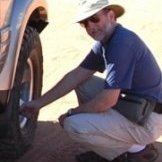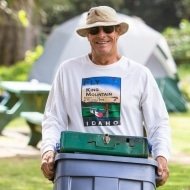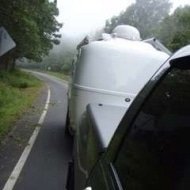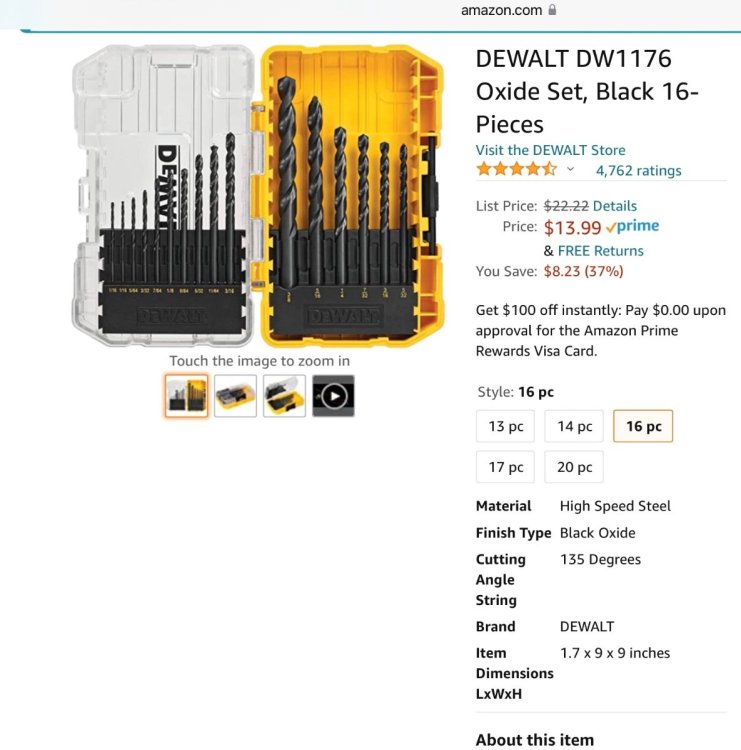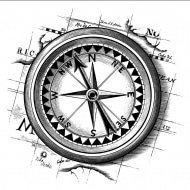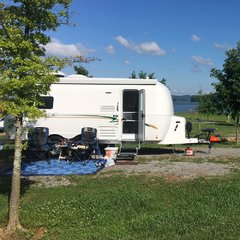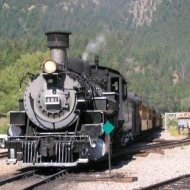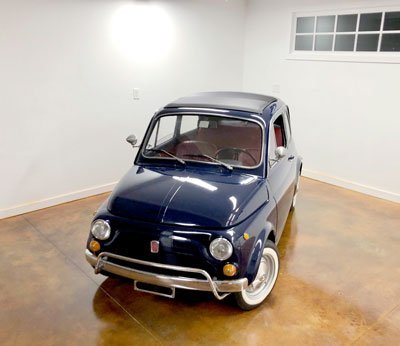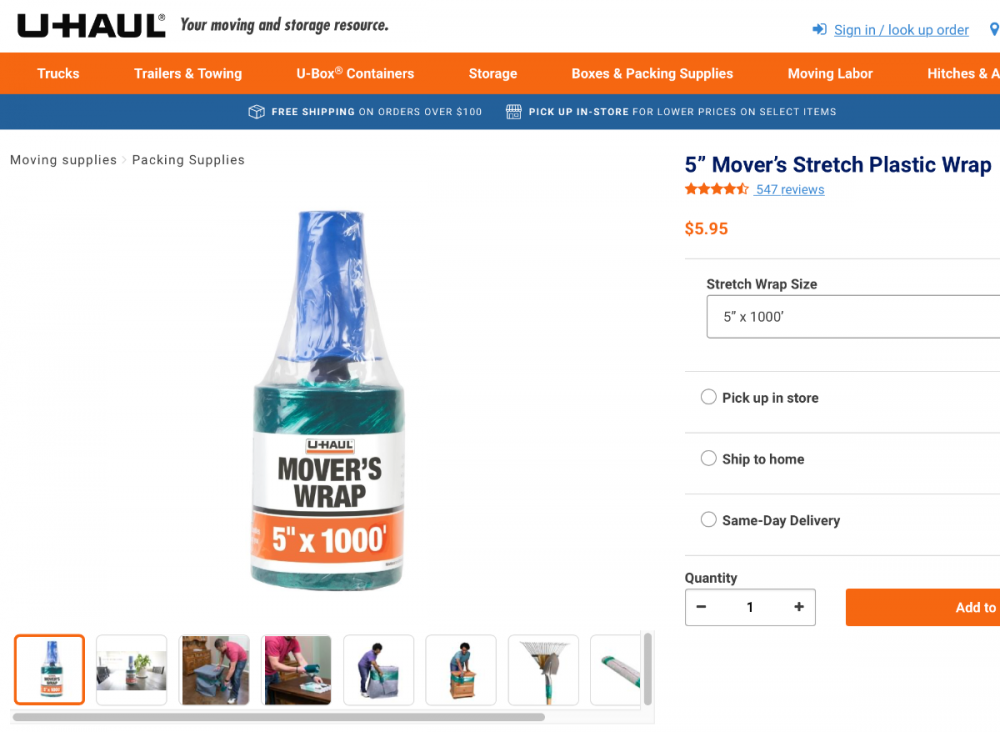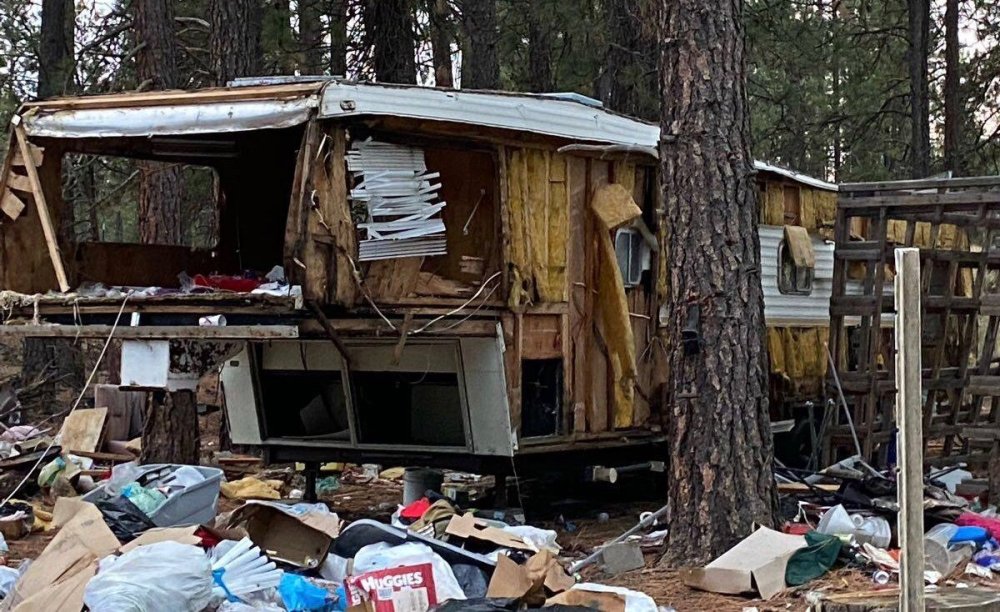Leaderboard
Popular Content
Showing content with the highest reputation on 11/08/2021 in all areas
-
I received this question as a private message (PM), but am posting it here as others may benefit from the discussion, or wish to weigh in... "Does the inverter automatically shut off when the batteries reach their full charge state? If so how would I know this? Is there any setting that would tell me this? Since our fan keeps running I am thinking in my head that the inverter is still trying to charge the batteries... I am thinking that the inverter is still drawing some power from our batteries when we are disconnected from shore power if that is at all possible. Maybe that is why our batteries are draining so fast with nothing on in the RV?" My understanding (which is very far from complete, and may in fact be flat-out wrong) is that the Xantrex unit really has two components: (1) a charging function and (2) an inverting function. When connected to shore power, the Xantrex unit is on, but its sole function is charging the batteries. The Xantrex unit is not inverting (changing 12V current to 110 volts) because it doesn't need to; the 110V outlets (and A/C, microwave, etc) are powered with shore power. The uppermost "esc" light on the remote panel is lit when the trailer is plugged into shore power and the Xantrex unit is set up to charge. The only way that I know to really "turn off" the Xantrex entirely is to trip the 300A breaker under the streetside bed. When in charge mode (i.e., plugged in to shore power) the Xantrex fan is running while charging. When the batteries are full the fan kicks on for about a minute every 15 minutes or so. When the batteries are full (or as full as you want them to be), you can set the charger ignition control in the Xantrex app to "auto-on" (again, thanks to NCEagle for this tip). In this mode the 110 outlets, the A/C, and the fridge get electricity from shore power, but the Xantrex unit is not charging the batteries. The inverter portion of the Xantrex unit is (or should be) active only when the trailer is not connected to shore power and the inverter is turned on (i.e., the button on the remote inverter panel is pressed in). The "bat" light on the remote panel is lit when the inverter is on. The Xantrex fan may run briefly when the inverter is first turned on (I suppose the fan could also run if the inverter is inverting to meet a large load). If the batteries are draining overnight there is likely another problem. Here are some ideas for troubleshooting the problem: Update the battery firmware to version 1.0.07 if you have not yet done so. In my experience, the SOC is completely unreliable if this is not done. Unreliable SOC might lead you to think there is a drain when there really is not. If updating the firmware, be sure to fully charge the batteries to 14.4 volts afterward to calibrate the SOC. When disconnected from shore power, turn off the solar (by turning off the the knob at the front of the streetside bed upper cabinet), turn off all lights, fans (including the toilet fan), etc., and check to see if there is a load on the batteries by checking the Lithionics app (2 upper right boxes below the SOC). The current and power should both be zero. Then... With updated firmware (and solar off, and no obvious load on the batteries), record the SOC and battery voltage on the Lithionics app. Let the trailer sit overnight and check again. The batteries should have a SOC and voltage very close to where you left it. If not, then... Turn off the inverter by tripping the 300 amp breaker under the streetside bed and letting the trailer sit overnight again. The SOC and battery voltage after a day or so should be the same as when you started the test. If this is the case, then there may be something in the inverter. If this is not the case, then there may be some other phantom load that is drawing down the batteries. (smoke, propane, etc detectors will draw down the batteries some, but it should not be very much over 24 hours). Record the SOC and battery voltage. Turn off each of the 3 batteries (button on top of the battery) and let them sit for a day or so. The SOC and battery voltages should be the same as when you started the test. This should confirm that the problem is not in the batteries. Next, .... Call Oliver. Any suggestions of mine are those of a well-meaning amateur, not to be confused with those of a real professional. They really should be able to help with this stuff; hopefully the results from some of the above-described steps will help them. Good luck!3 points
-
I learned the hard way about the amount of power a small hydraulic jack can put out. Where as a mechanical jack at least gives the operator some feedback as to the force being provided to the load. Another advantage is that they are not going to "blead down" when you have fingers in tight spaces. Glad you "got-er-done".2 points
-
Ah - come on guys - there's a bunch to still like. I'm sure that the frame is good as are some of the windows and how 'bout dem axles. Heck! There's still at least one tire there that simply has to be good.😆 Bill p.s. JD - I've got a couple of friends over in Idaho that just might be a bit insulted and come a callin'.2 points
-
Did you stay at a Holiday Inn last night?😁 Seriously, thanks for the work you are putting in to this thread. Bill2 points
-
I put wax on ours (candle type wax, not car wax) and it has helped immensely. Simple fix.2 points
-
Only upside is at least you had two bolts and one is still there, so doesn't look like it dropped on to the Wheel Well. I'm pretty sure, the installer put my bolts down and never came back to finish the job...just glad I found it.2 points
-
Welcome to the forum. The main difference between new and old Olivers are the non-Oliver components (fridge, solar controller, microwave/convection, etc). The frame and body are pretty much unchanged over the years. Lots of experienced members here so feel free to ask any questions. Mike2 points
-
Newbie to Oliver but not to the RV world - welcome, glad that you're here. Since used Olivers tend to sell very quickly, read as much as you can stand on the Forum and then be prepared to act quickly when a unit becomes available. Good luck and let us know what questions you may have. Bill2 points
-
I think Oliver got this winterization thing right. 2+ gallons of $3/gallon antifreeze (Super Walmart RV Section Before Fall) and we are done. No worries. Or, the cost of an air compressor that may or may not get the job done for sure. = worries to me. I like no worries better.1 point
-
I think the craigslist title is woefully incomplete. It should read “Free, you haul. Bring front-end loader and dump truck. And skid-steer for cleanup.”1 point
-
I pulled my Casita 17 with the Lexus LX 470. So that's 3000+ lbs with the 4.7L V-8, similar to the GX. It was doable and definitely better than with my 1997 LX 450, but the 570 I use now made it truly painless. That said, the E1 is about 5000(?) lbs and payload of the GX will be limited. The GX is an awesome truck, but if you want a great SUV for the E1 I'd look at the LX 570 or Land Cruiser with the 5.7 Tundra engine. It would be perfect, if your budget allows. (2013+ @ $40-50K) I'd not want to be shopping in this market, but most LX 570s are owned by folks that rarely go Offroad and you can get the service records via the VIN by creating an account on driverslexus.com. Look for trucks coming off lease or anything 2013 or later with under 100k miles with good service records. John Davies and I both pull the E2 with a 200 series. It's not a 3/4 ton diesel, but gets the job done and doesn't break.1 point
-
The original idea was from @Mike D.. John e Davies offered alternatives. Just to set the record straight.1 point
-
As a future owner whose Elite II build is months away, I have added "inspect battery box support bolts--nylock nuts?" to my growing list of items to double-check when taking delivery. I hope Oliver staff monitor this thread, and take steps to further improve their quality control before mine comes up...... But, I commend Oliver for the transparency of this forum. As a retired lawyer, I have been persuaded by the content on this forum that, like the American legal system, Oliver's imperfect production quality and customer service are the "worst in the world, except for all the rest." We remain committed to complete the purchase of our Ollie.1 point
-
I just towed the Ollie 1800 miles this week with this treatment and have the following observations: It stayed put well. No peeling at the corners or along the edges The vast majority of the visible flingings from the tow vehicle appear to have made contact in the 12" vertical area from the bellyband to the bottom of the trailer where I had applied the 3M product. NOTE: I run with a hitch-mounted, rubber rockguard across the rear of my tow vehicle (like rock tamer but a different brand). I have heard from some that 3M told them not to use their product on gelcoat. If anyone has been told this and reads this, I'd be interested in the why as it was explained to them by 3M. Is it due to the breathability required of gelcoat? Other reasons? I cannot imagine a 36"x12" application on each front corner would cause any worse issues than where the front Oliver logo and other vinyl graphics are applied. UPDATE: I went back to my receipts and found that I spent $35, not the $25 I reported earlier for a roll of 12"x72" 3M paint protectant. It really is simple to apply with the proper squeegee (also found on Amazon), a spray bottle of slip (just water and a few drops of soap). 1637704968_Ollie3M.webarchive1 point
-
Thank you John and all. I did use a 3/8 drill bit to drill out any burrs and now the pin is going in and out freely.1 point
-
We have owned 2 Airstream Excella Classic trailers in the past and just recently have sold our Barth motorhome. We have toured many miles in MX and the U.S over the last 30 years but now I am considering a smaller tow-behind trailer and came across the Oliver. I am just learning at this stage but know that we would not be in the market for a new one. I will browse the Oliver site and the forums trying to fill in the gaps in my knowledge of these fiberglass units.1 point
-
As Bill mentioned there are a number of threads on this. I used XPEL paint protection in 10 mil thickness on our Ollie corners and dog house and under the street side and curb side areas. We have used XPEL p/p for over a decade on cars and trucks we have owned. It’s an excellent product. XPEL.com - David1 point
-
Wow -- I had no idea. This appears to show up on the windshield, but it's hard to really say. I could see the speed limit, my current speed, and there were warnings as I approached a school zone. The downside of all of this new technology (imo) is that it's all requiring those pesky little chips that are stuck somewhere 'in transit' or not yet available. I miss the days when I helped my Dad gap the plugs and change the timing belt, when it felt possible to do some of the maintenance on an engine.1 point
-
UPDATE: We purchased a 2021 Toyota Tundra 4X4, 5.7 V8. I found a dealer (AutoNation) that did not add a "market adjustment fee" or charge $5,000 for floor mats. I never thought that we would pay sticker price for a vehicle and feel like we negotiated a good deal. This is the last of the Mohicans. Toyota is ending V8 production and the engine is known for reliability. Gas mileage isn't the greatest but there are always tradeoffs. I would love a diesel TV (any make) but there are none to be found on the dealer lots. We are living in strange times. Anyway, this is our first TV and RV. We have much to learn. We thank you all for your advice and guidance.1 point
-
Drilling is very simple, just get a bit the same exact size as your pin, do NOT go larger! That is not needed and will just make things too loose, the tight fit is needed for the ball to work correctly… There may be a slight misalignment or burr, and a bit the exactly same size as the pin will clean that up nicely. make sure the other pin is installed and lift up very slightly on the bumper to center the holes. My pins are 3/8”, double check yours, but I expect that is correct. A 3/8” bit will be found in most basic drill bit sets. If you don’t already have one, this set is quite nice for emergencies and fits in a galley drawer neatly. I also carry a Dewalt cordless drill and 1/2” impact driver when travelling, but that may be too anal for you. 😬 If you drill the holes with that bit and the pin still doesn’t go in, then you should replace it. There is either something wrong with the ball detent or it might be bent. You could try straightening a bent one using a bench vise and mallet, but there isn’t much you can do if the ball is messed up. John Davies Spokane WA1 point
-
By far, the best and easiest way to fix this problem (many of us have had this through the years) is drill it out, I would start with the easy side locked in place and use the correct size bit (as determined from the opposite side) if that doesn’t fix the problem, go up to the next larger bit until it works, try not to go too much oversize to prevent “slop” in the fitment.1 point
-
George: I started towing my 2018 OE2 with a 2005 Toyota Sequoia. Before my egg hatched, I reached out to the owners, just as you have. It was John Davies that responded back with the very excellent and PROVED to be spot on responses. The Sequoia I had was with their "New" 4.7L engine. My 2018 Summer Voyage was TX to OK to Oregon to NC and back to Texas; just over 8100 trailer miles. When JD responded, he intonated that mine would be underpowered out west, and would take a lot of energy on my part for long trips. I found that it was actually adequate for flat land use, it was not adequate for towing my Oliver out west in the mountains. Flat lands, it did much better so long as I kept mindful of brake heating and stopping distances. The MPG was pretty dismal though as I was always hard riding those ponies. Just north of the Denver area, I was crawling up a four lane highway, down shifting as my rig slowed until I was in first gear crawling up the mountain. I was actually passed by the US Cycling Team. I caught them and passed them on the down hill, and the process repeated itself several times. At one point we opened our front doors and were doing the "Fred Flintstone" one legged push off''s as they went by. We had plenty of water and passed it out to each rider as they passed by us on the next hill, and collected the empties as we passed them on the flats to the northwest. My passenger stated: "I think it is time for a new TV". I had to agree as I was a hazard on long climbs. For our Summer 2019 voyage, 7000 Miles, I had purchased new F-150 3.5L SuperCrew. That's when I finally figured out what Mr. Davies meant by my having to invest a lot of my energy into driving my Sequoia TV with an Ollie OE2. Having a very capable TV is MUCH easier on the driver. The Sequoia's are one of the most reliable vehicles on the road. (Shameless Plug Follows) Except for the Toyota Land Cruiser that is better in every way (Except Cost of course). Their relatively small fuel tank was found to be a time and energy sucker from "Low Fuel Shortage Syndrome". If you have the 5.7 L engine, 4 X 4 Sequoia, I would suggest that you give it a shot for a year. Then consider what YOUR needs are. In my case, that process worked well. Good luck, GJ1 point
-
We recently purchased Hull #617 from the Nau's and are personalizing it before heading out for the first time in it. We have been in a MB Airstream Interstate for 6 years and while we love it - it's time for a change. We have decided to sell it and take up the Ollie experience. We first contracted for a new 2022, but the wait for the promised May, 2022 delivery date was just too much. The late model 2020 had most of the options we wanted and was pretty appealing when compared to the all too distant May delivery date. I'm a project guy, so now it looks like there are plenty of mod projects in my future now. You'll find me chiming in occasionally on some of the future posts - just know that I frequently just cut to the chase so don't be put off by my short answers 🙂1 point
-
Welcome, CnC! Keep us posted on your personalization and other projects. It’s alway interesting to see who owners make each Oliver their own. Mike1 point
-
Polyurethane replacement bushings although stiffer are much more resistant to deterioration. A package of four is $4.75 here: https://www.suspension.com/9.8101 . I would check all the dimensions before purchasing replacements.1 point
-
Oliver purchases the galvanized steel suspension sub-frame. I believe it is from Dexter or some other third party. But it still may be Oliver’s problem if the subframe is being built by the third party to Oliver’s specs. Oliver manufactures the main aluminum frame in-house.1 point
-
Yep, fender washers, they are available in a really thick version, about 0.1” - I would get some of these. A local nut and bolt supplier will sell them individually. Fastenal shows these: 1/2" x 1.375" OD Thru-Hardened Yellow Zinc Finish Steel USS General Purpose Flat Washer I am guessing about the hole size….. please verify first! But if you don’t replace the bushings at the same time, the old ones will probably fail immediately. 😤 Have you opened a service ticket? John Davies Spokane WA1 point
-
I would’ve done the same…after having a discussion about misleading sales tactics and wasting my time with the manager.1 point
-
Trainman: I'm with you on that one. My father-in-law has the Ram 1500 Hemi and he loves it; nicest interior of any truck that I've come across. I dig the Ram and I love the Hemi. . . but my bride doesn't like the looks of the grill. She thinks the Toyota is "cute." If the wife ain't happy then nobody's happy. . .1 point
-
I tow with a 2020 Tundra and love it. Mine is the Crewmax 4/4. I agree the gas mileage is less than the other trucks mentioned but the reliability I will take all day long over Dodge, Ford and Chevy. I wish the payload was a little higher but we don't carry the kitchen sink with us. My buddy has the Ford Eco Boost and when he pulls his 28' RV his mileage is less than mine. I have a Lexus 570 that has basically the same V8 as the Tundra. Lexus 570 has around 228K miles and the engine just runs runs, and runs. I guess that is why I bought the Tundra with the V8. It ain't fancy with bells and whistles, but it is dependable all day every day.1 point
-
I'll make it simple: Ram, 1500 with the 5.7 Hemi Ford, with the 3.5 V6 turbo, don't get the smaller turbo, I think it's the 2.7 engine Chevrolet, with the 5.2 V8 Toyota, Tundra, I would pass on the present model, but the new 2022 with have a V6 and the V8 is going away, worst fuel mileage of all others. PS, if don't want to have to use the Anderson Hitch you can go with a 3/4 ton in any of the models above and you will be fine, you may give up a little in fuel mileage and ride comfort. I tow my 2019 Elite II with the Ram 1500 Hemi 4x4 and I don't even know it's back there most of the time, so the decisions are many and any truck 1/2 or larger will do the job just fine. I get between 12.7 and 13.2 mpg One other thought is go with a 4x4 model, it will have a heavier rating and the truck will set taller, plus 4x4's will have better resale values and much more in demand. Personally the mid-size trucks you give up a lot of extra room inside and out, plus the full size truck just do everything better for about the same cost. trainman1 point
-
I've always been a sucker for Italian cars. I know of the Alfasud. The flat four with fuel injection was a big deal at that time. Now, we have a 1971 Fiat 500 in our garage. Two cylinders, 24 horsepower, 9 feet from bumper to bumper at 1,100 lbs. You can't get a WDH for one of these either. The parts falling off of it are among the finest in Italian engineering. Anyway, it's more reliable than any Alfa I've ever owned.1 point
-
We had a 14 Tundra Platinum and sold it and purchased an F250 CC 6.7 liter diesel with high capacity tow package, camper pkg and a bunch of other options. Our Tundra was “capable” of towing our Ollie, but the RPMs shot up on mountain passes for sure. We felt it was a bit under powered, needed a refresh due to out dated tech, lacked cargo room, and the mpg’s were not great. Reliability I will say was excellent. We absolutely wanted more cargo room, more comfort on long trips, much higher cab, much better fuel mileage, larger fuel tank, and the diesel brake or engine brake which has worked excellent towing the Ollie. On long mountain grades the auto engine brake is a TV and Trailer brake saver in my experience. Any diesel will cost you more in maintenance. On our last trip of 3500 miles up through the great north woods of NY, Mass, Conn, NH, VT, and MA, we throughly enjoyed the comfort, power and high cab touring view during the trip. The odo now registers 15,000 miles and we are really pleased with everything about it. It’s a large truck and we primarily use it for a TV. As previously mentioned it’s not a daily driver or commuter, we purchased knowing this. It sure is nice on long trips for all the reasons mentioned. Trucks are very scarce as a few have mentioned. There is a 3-4 month wait on Super Duty Fords according to dealers in our area. We even got a call from our salesman wanting to buy our truck back for more than we paid for it. I had no interest in this offer. Think about how you will use your new or used truck and buy what meets your needs and naturally your budget over the long haul. Many vehicles will tow an Ollie, but stopping is a very thing to consider. You don’t want the tail wagging the dog.1 point
-
I wash mine in the regular washing machine on Cold/ Gentle, followed by a fast spin, and, lay them flat to let them air dry. I never had a problem. Oh yeah, remove the foam inserts first . 😉 John Davies Spokane WA1 point
-
One of my hoses split unexpectedly near the sewer outlet when dumping, fortunately it was just grey water, I would not have enjoyed that if there were black solids spilling out into the rear bumper cavity and onto the ground! I bought a spare set of two hoses at Walmart and tossed the bad section. I decided to carry the second one always as a spare. Ten feet will compress to less than two! I wrapped around it in a circular manner, added two full lengthwise wraps to make sure it couldn't pop open, followed by more circular wraps. The wrap is common mover's wrap, it is super expensive at Staples or even Walmart, but this is a great source for less than $6. It is an on-the-shelf item in every store. I use this for all kinds of temporary securing in my garage and while camping. My trailer was delivered with Camco hoses, yours may vary but they should stow the same. John Davies Spokane WA1 point
-
Not until you are buck naked, standing in the shower, and, realize that you forgot to turn the water pump on.😊1 point
-
I also have the lithium pro package and was told by Hanna during our orientation that whenever the trailer will sit for three weeks or more we should simply turn them off, using the on-off button on the top of each of the three batteries.1 point
-
Since it is a climate controlled facility I would guess that means that the humidity is controlled. If that is correct then there is no need for the a/c being on. However, until you're sure you could get a tub of "damp-rid" or a small dehumidifier. As far as the fridge is concerned I think your choice depends on how soon you will be using the Ollie again. At a time span of over a month I always shut the fridge off, clean it and wad up several sheets of news paper and put it in the fridge - this prevents odors interestingly enough. Bill1 point
-
I will start, this showed up in a Craigslist Ad, “free, you haul”. Usually I would expect this to be in Idaho, but it is actually close by, in case anybody here is interested😁. Can you imagine the incredible mess if a wind storm went through there? I bet his neighbors love him…. For those who may not know, the black areas in the wood are dry rot and mold. John Davies Spokane WA0 points
-
0 points
-
Recent Achievements


